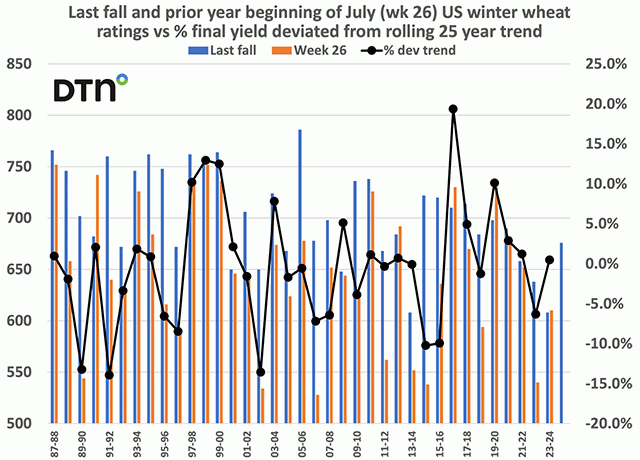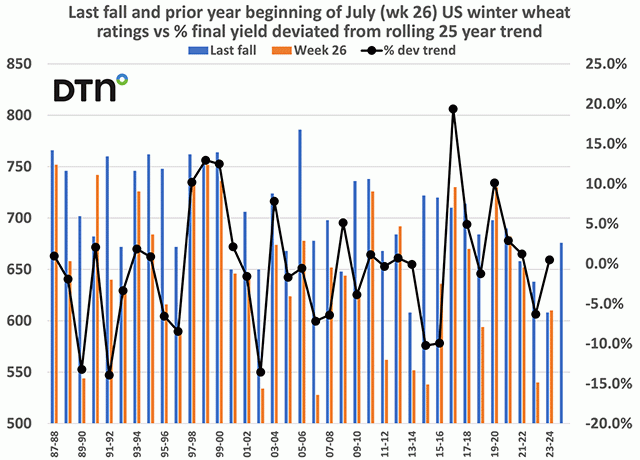Fundamentally Speaking
Comparing Final Fall Wheat Condition Ratings With Yield Deviation
The USDA released its final fall condition rating for the 2023 U.S. winter wheat crop Monday and, using our usual ratings system where we weight the crop based on the percent in each category and assign that category a factor of two for very poor, four for poor, six for fair, eight for good, and 10 for excellent and then sum the results, the last rating before the next one is issued at the beginning of April comes out to 676.
This is a sizable 11.8% increase above a year ago's final fall crop condition rating for the 2023 U.S. winter wheat crop of 608 and the highest final fall rating in four years, though it is below the 1987-2023 average of 702.
P[L1] D[0x0] M[300x250] OOP[F] ADUNIT[] T[]
This chart shows the final fall winter wheat rating along with the year prior's beginning of July or week 26 rating on the left-hand axis while plotted on the right-hand axis is the percent that the final U.S. winter wheat yield deviated from the 25-year rolling trend yield figure.
The fact that 50% of the U.S. winter wheat crop is in good or excellent condition as of the end of November versus just 34% a year ago is testament to the improved moisture situation in much of the central and Southern Plains, though many key winter-wheat producing states still have large areas of drought.
We should note the current 676 rating is higher than the 610 rating at the beginning of last July, though the 66-point improvement is not much above the average 53-point gain in crop ratings seen from the beginning of July to the end of November.
As wheat futures continue to make new contract lows almost on a daily basis linked to the better condition of this year's U.S. winter wheat crop versus those seen in recent seasons and, more importantly, a complete lack of export business, keep in mind it's a long time until this year's crop will be harvested. How it fares over the winter and what weather is like in the key heading period will be instrumental in determining final yields. Using 1987-2023 data, the correlation between the final fall rating and the percent that the final winter wheat yield deviates from trend is 16.7%, but that jumps to 72.2% by the beginning of July.
(c) Copyright 2023 DTN, LLC. All rights reserved.






Comments
To comment, please Log In or Join our Community .